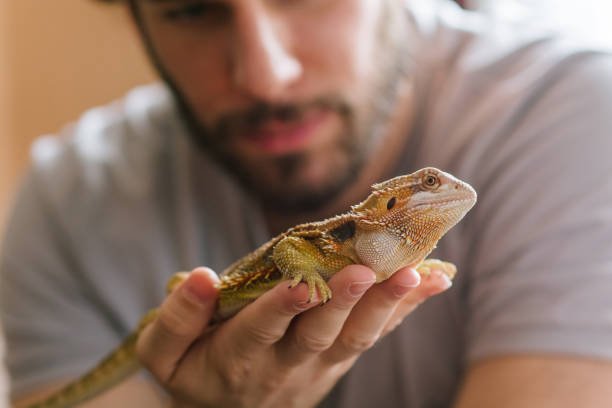This post contains affiliate links, meaning that I may receive compensation if you make a purchase through these links. As an Amazon Associate, I earn from qualifying purchases. This compensation does not influence the content, or recommendations provided. The opinions expressed are my own, and I strive to provide honest and unbiased information.
From the comfort of your backyard to the serene paths of local parks and the expansive reaches of national wildlife refuges, countless opportunities await to observe the continent’s rich avian diversity. With over 900 bird species gracing North American skies, you’ll find familiar feathered friends across a variety of regions and seasons, making every birdwatching experience unique and exciting.
Birdwatching Trivia
Did you know that birdwatching is one of the fastest-growing outdoor activities in the U.S.? According to the U.S. Fish and Wildlife Service, around 45 million Americans engage in birdwatching every year. Many birdwatchers participate in what’s known as the “Big Year,” a personal challenge to see as many bird species as possible in one year.
Let’s take a closer look at some of the most common birds you’ll see in various regions of North America, along with seasonal tips to help you spot them.
1. American Robin (Turdus migratorius)
Region: Found across the United States, Canada, and Mexico
Seasonality: Year-round in much of the U.S., migrates from colder regions in the fall.
The American Robin is a familiar sight in suburban backyards, easily recognized by its bright red-orange breast and cheerful song. This bird is highly adaptable, thriving in both rural and urban environments. In northern areas like Canada, robins are primarily seen during spring and summer. As the weather cools, they migrate south to avoid harsh winters.
Robins are commonly associated with the arrival of spring, but in warmer areas of the southern U.S., they may be seen year-round. Their diet includes insects, worms, and fruit, making them frequent visitors to garden bird feeders.
2. Northern Cardinal (Cardinalis cardinalis)
Region: Eastern and Central U.S., parts of Mexico, and Central America
Seasonality: Year-round
With its striking red plumage and distinctive crest, the Northern Cardinal is one of the most popular backyard birds. Males are a brilliant red, while females are more muted with brown tones, but both are equally lovely. Cardinals are year-round residents in the eastern United States, particularly in states like Ohio, Kentucky, and Virginia, where they thrive in woodlands, gardens, and city parks.
These birds are known for their strong, sweet song, which is often heard at dawn and dusk. Cardinals feed on seeds, insects, and fruits, and they readily visit feeders stocked with sunflower seeds.
3. Blue Jay (Cyanocitta cristata)
Region: Eastern and Central U.S., Southern Canada
Seasonality: Year-round
The Blue Jay is known for its bold blue coloring and loud, jarring call. These birds are intelligent, social, and sometimes aggressive when protecting their territory. They are particularly common in the eastern half of the United States, where they can be found year-round.
Blue Jays are notorious for their varied diet, which includes seeds, nuts, fruits, and small animals. They are known to mimic the calls of hawks, possibly to scare other birds away from food sources. Blue Jays are regular visitors to bird feeders, especially those filled with peanuts and sunflower seeds.

4. American Goldfinch (Spinus tristis)
Region: Throughout the U.S. and Southern Canada
Seasonality: Year-round in much of the U.S., migrates from northern areas in winter.
American Goldfinches are small, vibrant yellow birds that bring a splash of color to any garden. Males are particularly bright during the breeding season, while females and non-breeding males have a more subdued olive-brown color. These birds are commonly seen in open fields, meadows, and suburban areas.
While goldfinches can be spotted year-round in southern regions, they tend to migrate south from the northern U.S. and Canada during winter months. They are strict vegetarians, feeding mainly on seeds and favoring thistle feeders.
5. Bald Eagle (Haliaeetus leucocephalus)
Region: Throughout the U.S., Alaska, Canada, and Mexico
Seasonality: Year-round, but some northern populations migrate in winter.
The Bald Eagle is not only a national symbol of the United States, but it’s also one of the most majestic birds in North America. These birds are easily recognizable by their white heads, brown bodies, and broad wings. Bald Eagles can be found near large bodies of water, such as lakes and rivers, where they hunt fish, their primary food source.
In northern regions like Alaska and Canada, Bald Eagles migrate to warmer areas in the winter, but they can be seen year-round in the lower 48 states. They have made an impressive comeback from near extinction, thanks to conservation efforts.
6. Mourning Dove (Zenaida macroura)
Region: Throughout North America
Seasonality: Year-round
Mourning Doves are widespread across the continent, known for their soft cooing calls and graceful flight. These small, pale-gray birds are commonly found in open fields, farmlands, and urban areas. They are ground feeders, eating seeds and grains.
Mourning Doves are year-round residents in most parts of the U.S., although northern populations may migrate to warmer climates in the winter. They’re among the most hunted game birds in the U.S., but their populations remain strong due to their high reproductive rates.
7. Red-tailed Hawk (Buteo jamaicensis)
Region: North America, from Alaska to Panama
Seasonality: Year-round
Red-tailed Hawks are large birds of prey known for their broad, rounded wings and rusty red tails. They are one of the most common hawks in North America, often seen soaring above fields and highways. Red-tailed Hawks are year-round residents in most parts of the U.S. and can be found in various habitats, from forests to deserts to urban areas.
These hawks primarily feed on small mammals, birds, and reptiles, and their iconic high-pitched scream is often used in movies to represent birds of prey.
8. Canada Goose (Branta canadensis)
Region: Canada, U.S., and Mexico
Seasonality: Year-round, but migrates in some regions
The Canada Goose is a large bird with a black head, white chinstrap, and brown body. They are known for their V-shaped flying formations during migration and can be found in wetlands, lakes, and even city parks.
While Canada Geese are year-round residents in some regions, particularly the northern U.S. and southern Canada, many populations migrate in the spring and fall, heading to southern parts of the U.S. and Mexico during winter. Their loud honking calls make them easy to identify.
Seasonal Birdwatching Tips

The variety of birds you can see in North America depends on the season and your location. For example:
– Spring and Fall: Migration periods are prime times for birdwatching. Birds like warblers, shorebirds, and waterfowl migrate between their breeding and wintering grounds.
– Winter: In northern regions, birds like chickadees, nuthatches, and juncos are common at feeders. Southern states, however, may see an influx of migratory species like ducks and hummingbirds.
-*Summer: Breeding season is in full swing, and you’ll see many species building nests and raising young. Look for Orioles, Swallows, and Hummingbirds during this time.
Birdwatching Gear and Supplies for Pet Lovers
If you’re an avid birdwatcher or simply enjoy observing birds in your backyard, having the right gear can enhance your experience. Here are some top affiliate products to consider:
– Binoculars: High-quality binoculars are a must for birdwatching. Brands like Nikon and Celestron offer great options for all budgets.
– Bird Feeders: Attract more birds to your yard with bird feeders. Sunflower seed feeders, suet feeders, and hummingbird feeders can make your backyard a birdwatcher’s paradise.
– Birdhouses: Providing safe nesting spaces can encourage birds to take up residence. Try looking for birdhouses specifically designed for different species, such as bluebirds or wrens.
Conclusion
Birdwatching is a rewarding hobby that connects us with nature. From the familiar American Robin to the majestic Bald Eagle, North America is home to an incredible diversity of bird species. So, whether you’re watching birds from your window or hiking through a national park, there’s always a new species to discover.
Happy birdwatching! For more information, read: Birdwatching: A Guide for Novices and Pros

















